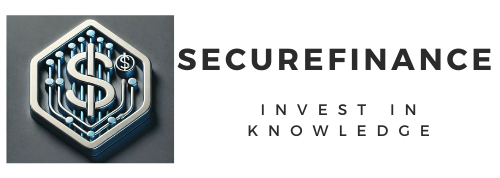
When considering borrowing options, it’s essential to understand the differences between secured and unsecured loans. These loan types cater to various financial needs, risk levels, and borrower qualifications. By delving deeper into their specifics, you can make an informed decision that aligns with your goals and capabilities.
What Are Secured Loans?
Secured loans are financial agreements backed by collateral—a tangible asset like a home, car, or savings account. This collateral serves as security for the lender, ensuring repayment even if the borrower defaults.
Examples of Secured Loans
- Mortgage Loans: Backed by real estate.
- Auto Loans: Secured by the purchased vehicle.
- Home Equity Loans: Tied to home equity as collateral.
The collateral reduces the lender’s risk, often leading to lower interest rates and higher borrowing limits. However, defaulting on the loan could result in losing the collateralized asset.
What Are Unsecured Loans?
Unlike secured loans, unsecured loans require no collateral. Approval hinges on the borrower’s creditworthiness, income, and financial history. Common examples include credit cards, personal loans, and student loans.
Examples of Unsecured Loans
- Personal Loans: Used for diverse purposes without collateral.
- Credit Cards: Revolving credit based on trustworthiness.
- Student Loans: Backed by credit and income-based repayment options.
Since these loans pose a higher risk to lenders, they often come with higher interest rates and stricter qualification requirements.
Secured Loans vs. Unsecured Loans: Core Differences
| Feature | Secured Loans | Unsecured Loans |
|---|---|---|
| Collateral | Required | Not required |
| Risk to Borrower | Loss of collateral if defaulted | No asset risk but credit score impact |
| Interest Rates | Typically lower | Generally higher |
| Loan Amounts | Higher borrowing limits | Often lower borrowing limits |
| Approval Criteria | Less emphasis on credit score | Heavily reliant on creditworthiness |
Pros and Cons of Secured Loans
Advantages
- Lower Interest Rates: Collateral decreases lender risk, benefiting borrowers.
- Flexible Terms: Higher loan amounts and longer repayment periods.
- Easier Approval: Accessible to borrowers with limited credit histories.
Disadvantages
- Collateral Requirement: Not all borrowers possess suitable assets.
- Risk of Asset Loss: Defaulting leads to forfeiting the collateral.
Pros and Cons of Unsecured Loans
Advantages
- No Collateral Needed: Lower risk of losing assets.
- Faster Approval Process: Streamlined due to simpler requirements.
Disadvantages
- Higher Interest Rates: Increased lender risk translates to higher costs.
- Stricter Qualification: May exclude individuals with poor credit scores.
Choosing Between Secured and Unsecured Loans
When deciding between these options, assess your financial situation, borrowing purpose, and risk tolerance.
- If You Have Assets: Secured loans are cost-effective for large purchases like homes or cars.
- If You Lack Collateral: Unsecured loans provide flexibility but may cost more in interest.
Factors Influencing Loan Decisions
Credit Score
Lenders heavily weigh your credit score, particularly for unsecured loans. A higher score improves access to better rates and terms.
Loan Purpose
Determine whether the loan is for a significant purchase (like real estate) or smaller, unsecured needs (like travel expenses).
Interest Rates and Terms
Evaluate the total cost of borrowing, factoring in interest rates and loan tenure.
Secured Loans: Real-Life Applications
For instance, mortgages remain a prime example of secured loans. Borrowers gain access to substantial funds for homeownership, using the property itself as collateral. This arrangement benefits buyers with lower monthly payments spread over decades.
Unsecured Loans: Real-Life Applications
Consider personal loans for home renovations or debt consolidation. With no asset at stake, borrowers enjoy flexible usage, provided they meet the credit standards.
How Risk Levels Affect Lenders and Borrowers
Secured loans distribute risk by attaching tangible assets to the agreement. Unsecured loans shift the risk to lenders, which impacts approval rates and costs. Understanding this dynamic aids in choosing wisely.
Improving Your Chances of Loan Approval
To boost your eligibility for either type of loan:
- Maintain a strong credit score.
- Provide clear documentation of income.
- Reduce outstanding debts.
FAQs
What are the main differences between secured and unsecured loans?
Secured loans require collateral, while unsecured loans depend on creditworthiness, making the latter riskier for lenders.
Can I switch from an unsecured loan to a secured one?
In some cases, lenders may allow refinancing unsecured loans into secured ones for better terms.
What happens if I default on a secured loan?
The lender can seize the collateral to recover the loan amount.
Are secured loans always better than unsecured ones?
Not necessarily. It depends on your financial situation and borrowing needs.
What types of credit scores are ideal for unsecured loans?
Scores above 700 generally receive favorable terms, while lower scores may face higher interest rates.
Can I use both secured and unsecured loans simultaneously?
Yes, as long as you manage repayments responsibly, having both can help meet diverse financial goals.
You Can Also Read : How to Maximize Social Security Benefits in Retirement
Conclusion
Understanding the differences between secured and unsecured loans empowers borrowers to navigate financial decisions effectively. Whether prioritizing lower costs through collateral-backed loans or opting for flexibility with unsecured loans, evaluating your options ensures you meet your financial objectives responsibly.
